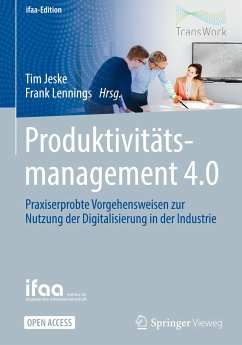
Knowledge and Skill Chains in Engineering and Manufacturing
Information Infrastructure in the Era of Global Communications
Herausgegeben: Arai, Eiji; Eindhoven University of Technology Fac. Technology Management; Kimura, Fumihiko; Shirase, Keiichi

PAYBACK Punkte
58 °P sammeln!
This book explores knowledge and skill chains in engineering and manufacturing in the age of global communications. Information infrastructure involves a range of activities from product planning, engineering, and manufacturing trough transportation, marketing, and repair/upgrade to returns and recycling/disposal. Distinct from the traditional engineering database, life-cycle support information has its own characteristic requirements, -- flexible extensibility, distributed architecture, multiple viewpoints, long-time archiving, and product usage information. Several authors address the architecture of the information infrastructure, its services and its requirements. Others focus on the knowledge and skill chains in: the supply chain, the factory floor, the man-system interaction, etc. The editors' introductory essay provides a unifying framework for these expert and wide-ranging studies.
Since the first DIISM conference, which took place 9 years ago, the world has seen drastic changes, including the transformation of manufacturing and engineering software, and the information and communication technologies deployed. The conditions for manufacturing and engineering have changed on a large scale, in terms of technology-enabled collaboration among the fields of design, engineering, production, usage, maintenance and recyclingldisposal. These changes can be observed in rapidly-growing fields such as supply chain management. As for production technologies at factory floors, new visions on human-machine co-existing systems involve both knowledge management and multi-media technologies. Therefore, because of these changes, the importance of information infrastructure for manufacturing has increased, stunningly. Information infrastructure plays a key role in integrating diverse fields of manufacturing, engineering and management. This, in addition to its basic role, as the information and communication platform for the production systems. Eventually, it should also serve the synthetic function of knowledge management, during the life cycles of both the production systems and their products, and for all stakeholders.














